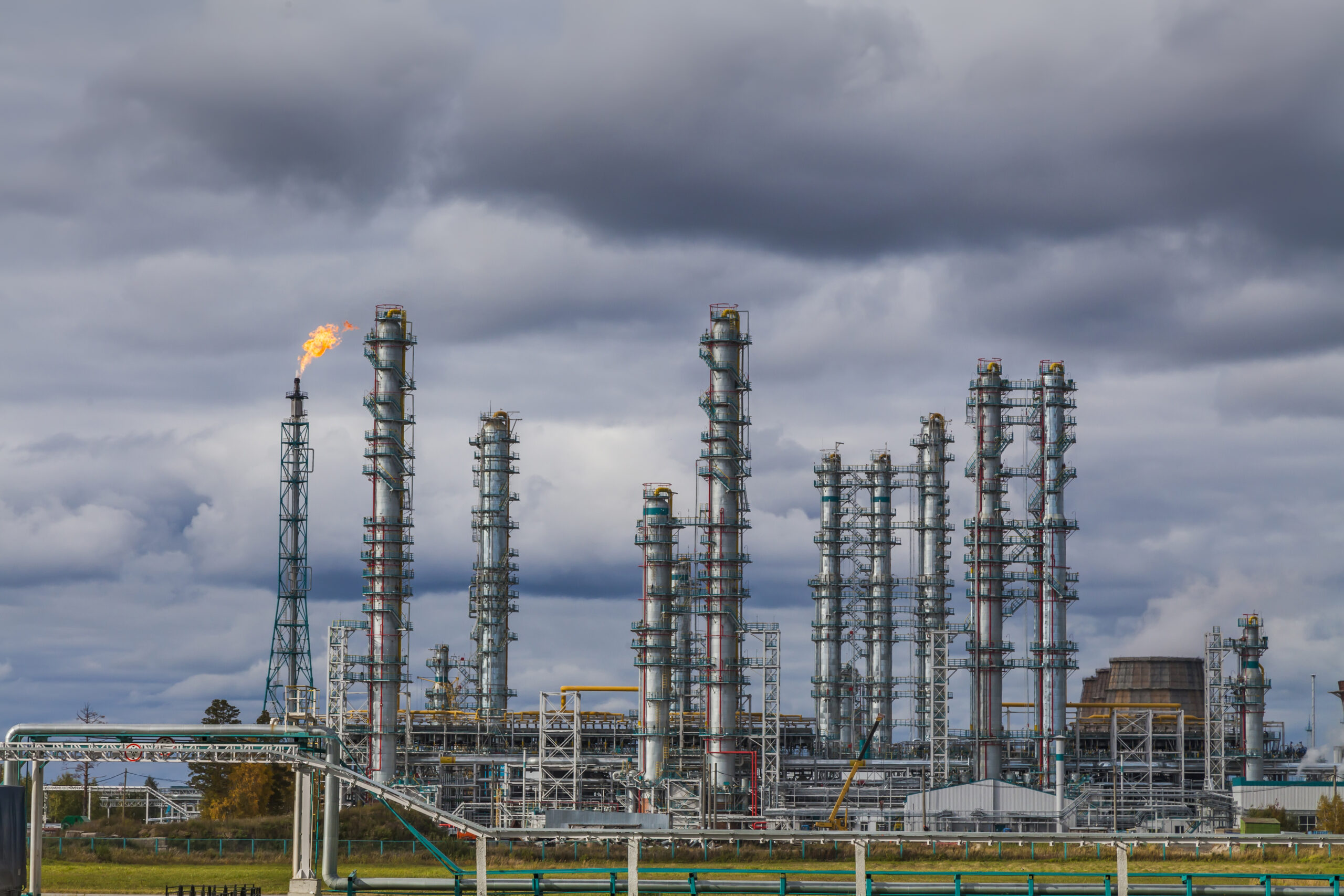The oil and gas industry are undergoing a technological transformation, driven by advancements in aerial surveying and remote sensing. These innovations provide crucial insights that enhance operational efficiency, improve safety, and ensure regulatory compliance. With the integration of high-resolution imagery, emissions monitoring, and 3D modeling, operators can now access detailed, real-time data that was once difficult or expensive to obtain. As these technologies evolve, their applications in methane detection, emissions monitoring, and infrastructure development continue to expand, redefining the way companies manage their assets.
3D Modeling & Digital Twins for Infrastructure Management
High-resolution 3D imagery and photogrammetry are revolutionizing how oil and gas companies plan and manage infrastructure projects. LiDAR and photogrammetric modeling enable the creation of precise, georeferenced 3D models of well pads, refineries, and pipeline corridors. These tools offer significant benefits, including:
- Pre-construction site assessment: Evaluating terrain, identifying hazards, and optimizing site layout before construction begins.
- Progress tracking: Capturing regular updates to monitor construction phases and ensure projects remain on schedule.
- As-built verification: Comparing real-world progress with engineering designs to detect deviations early.
By leveraging these capabilities, companies can achieve cost savings, minimize rework, and optimize project planning.
Case Study: 3D Imagery for Infrastructure Management A mid-sized producer in the DJ Basin integrated LiDAR-based pipeline mapping, reducing engineering rework by 40% and achieving a $2 million project cost reduction over 18 months. This technology enables real-time modeling of well pads, refineries, and pipeline corridors, improving planning accuracy and efficiency.
Methane Detection at Orphan Wells
Methane emissions from orphaned and abandoned wells present significant environmental and regulatory challenges. Advanced remote sensing technologies, including Optical Gas Imaging (OGI) and Tunable Diode Laser Absorption Spectroscopy (TDLAS), allow operators to detect leaks non-invasively. OGI cameras visualize gas leaks in real time, while TDLAS quantifies methane concentrations with high sensitivity, even in complex conditions.
By integrating handheld or fixed-base laser technologies into aerial surveys, operators can systematically locate and assess orphan wells over vast areas with unprecedented speed and accuracy.
Case Study: Orphan Well Methane Detection An operator in Texas used a two-phase aerial survey to document abandoned wells, leveraging high-resolution imaging and infrared gas detection. Key features such as methane releases, wellheads, surrounding access routes, environmental conditions, and potential hazards were accurately documented. The insights derived from these surveys enabled the operator to evaluate risks, optimize remediation plans, and comply with regulatory requirements efficiently while maximizing carbon credit generation opportunities.
Emissions Monitoring from Tanks and Pipelines
With increasing regulatory oversight, detecting and quantifying fugitive emissions is essential for oil and gas operators. Traditional leak detection methods require labor-intensive manual inspections, whereas aerial-based OGI and TDLAS systems significantly enhance efficiency by providing real-time data on leak sources.
Using advanced airborne sensors, companies can detect VOCs and methane leaks across vast pipeline networks without the need for physical access. These methods help companies stay ahead of regulatory requirements by providing real-time data on leak sources, allowing for rapid response and mitigation. Furthermore, quantification algorithms integrated into these systems can estimate emission volumes, providing operators with precise data to support compliance reporting.
Case Study: Cost Savings and Operational Efficiency A producer in the Eagle Ford shifted from manual inspections to remote methane detection, reducing regulatory fines by 30% and field personnel costs by 25% within a year. Leadership can reallocate budgets toward production optimization while maintaining compliance.
3D Imagery for Offshore Platforms
Offshore platforms require continuous inspections to ensure structural integrity and operational efficiency. However, manual inspections often lead to costly downtime and safety risks. Drone-based LiDAR surveys and 3D visualization technologies offer a safer, more cost-effective solution. The LiDAR/3D photogrammetry systems can capture precise, three-dimensional models of a platform’s exterior. This can help detect subtle changes in geometry that may indicate structural issues.
3D visualization can be used to create digital replicas of the platforms. These digital twins allow for continuous monitoring and comparison over time, helping predict where maintenance might be needed.
Bureau of Safety and Environmental Enforcement (BSEE) may require that drone-collected data be validated against or used in conjunction with conventional inspection techniques.
Case Study: 3D Imagery for Offshore Platforms A major energy company deployed drones equipped with high-resolution LiDAR and photogrammetry cameras to inspect offshore structures. Drones captured precise, three-dimensional point clouds of the platform’s external structures. The raw data was processed using specialized software that generated detailed 3D models. This allowed engineers to perform virtual inspections, pinpointing areas of concern such as corrosion hotspots, minor deformations, or cracks without the need for immediate physical access. The 3D models were integrated into the company’s digital twin system. This integration enabled ongoing condition monitoring and allowed maintenance teams to schedule targeted repairs based on data-driven insights. This approach reduced inspection costs by 30%, minimized downtime by nearly 50%, and enabled early detection of corrosion and structural issues, preventing costly repairs.
Flare Control and Efficiency
Flares operating outside their design specifications can become major emission sources, leading to regulatory fines. Aerial surveying and remote sensing play a vital role in flare efficiency monitoring by providing real-time combustion data. Drones equipped with OGI cameras and multispectral sensors detect improper flare combustion and excessive emissions.
Case Study: Improving Flare Stack Efficiency & VRU Uptime A Permian Basin producer integrated aerial thermal scanning into its maintenance program, increasing vapor recovery unit (VRU) uptime from 60% to 99%. This translated into a $500,000 annual cost reduction by avoiding unnecessary flare gas losses while ensuring compliance with regulatory requirements.
Non-Destructive Testing (NDT) of Facilities
Traditional inspection methods for oil and gas facilities—such as scaffolding, rope access, and shutdowns—are costly, time-consuming, and hazardous. Drones equipped with ultrasonic testing (UT) capabilities provide a revolutionary solution by enabling precise wall thickness measurements and structural assessments without requiring human access to dangerous areas.
Case Study: Insurance and Liability Reduction A Gulf Coast operator adopted routine drone-based NDT after experiencing a costly pipeline failure. This proactive approach reduced emergency repair costs by 70% over two years. Aerial inspections support risk management strategies, potentially lowering insurance premiums and enhancing asset integrity.
Conclusion
Aerial surveying and remote sensing are transforming oil and gas operations by improving efficiency, enhancing safety, and ensuring regulatory compliance. With advancements in 3D modeling, emissions detection, and non-destructive testing, companies can now make data-driven decisions that optimize performance and reduce costs. As technology continues to evolve, the industry will see even greater adoption of these innovative solutions, reinforcing their role as essential tools for modern energy operations.

Prior to joining Eye-bot.com, Palmerton managed complex environmental consulting projects for energy clients and Fortune 100 companies nationwide. With a track record of providing senior technical oversight, strategic support, and meticulous cost control on large-scale, multi-component initiatives, Palmerton has successfully navigated some of the nation’s most high-profile environmental investigations.

